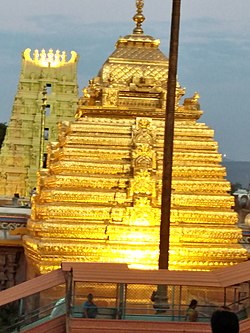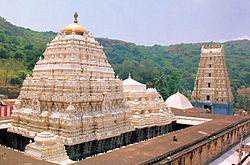India, known for its rich cultural and religious diversity, is home to thousands of Hindu temples, each with its unique architecture, historical significance, and spiritual essence. From the snow-clad peaks of the Himalayas to the coastal towns in the south, these temples attract millions of devotees and travelers alike. This comprehensive guide covers some of the most iconic and revered Hindu temples across India, ideal for anyone seeking spiritual insight or architectural marvels.
1. Kashi Vishwanath Temple, Varanasi (Uttar Pradesh) Hindu temples in India
Located on the western bank of the holy river Ganges, Kashi Vishwanath is one of the twelve Jyotirlingas and holds immense significance in Hinduism.
Highlights:
- Dedicated to Lord Shiva Hindu temples in India
- One of the oldest and most visited temples in India
- Believed to be the gateway to Moksha (liberation)
2. Kedarnath Temple, Uttarakhand
Situated in the Garhwal Himalayas, Kedarnath is also a Jyotirlinga and part of the Char Dham Yatra.
Highlights:
- Only accessible during summer (May to October)
- Surrounded by snow-capped peaks
- Reconstructed after the 2013 flash floods
3. Badrinath Temple, Uttarakhand Hindu temples in India
Badrinath is dedicated to Lord Vishnu and is another Char Dham pilgrimage site.
Highlights:
- Located at 3,133 meters above sea level
- Idol of Lord Badrinarayan made of Shaligram stone
- Set amidst the Nar and Narayan mountain ranges
4. Somnath Temple, Gujarat Hindu temples in India
This temple is considered the first among the twelve Jyotirlingas.
Highlights:
- Rebuilt several times due to invasions
- Located on the Arabian Sea coast
- Combination of historical and mythological significance
5. Ramanathaswamy Temple, Rameswaram (Tamil Nadu)
A part of the Char Dham and revered as a Jyotirlinga, this temple is famous for its long corridors and intricate carvings.
Highlights:
- Connection to Lord Rama’s journey to Lanka
- Contains 22 holy wells believed to purify si Hindu temples in India ns
- One of the longest temple corridors in the world
6. Meenakshi Temple, Madurai (Tamil Nadu)
A masterpiece of Dravidian architecture, this temple is dedicated to Goddess Meenakshi (a form of Parvati) and Lord Sundareswarar (Shiva).
Highlights:
- Known for its 14 gopurams (gateway towers)
- Hosts the annual Meenakshi Thirukalyanam festival
- Center of Tamil culture and devotion
7. Jagannath Temple, Puri (Odisha)
Famous for its annual Rath Yatra, this temple is one of the Char Dhams.
Highlights:
- Dedicated to Lord Jagannath (Krishna), Balabhadra, and Subhadra
- Non-Hindus are not allowed inside the main temple complex
- The temple kitchen is one of the largest in the world
8. Venkateswara Temple, Tirupati (Andhra Pradesh)
Also known as Balaji Temple, it is one of the richest and most visited religious sites in the world.
Highlights:
- Devotees donate generously to the temple
- Believed to fulfill the wishes of pilgrims
- Ancient rituals and traditions observed strictly
9. Brihadeeswarar Temple, Thanjavur (Tamil Nadu)
Built by Raja Raja Chola in the 11th century, this UNESCO World Heritage Site is a marvel of South Indian architecture.
Highlights:
- Dedicated to Lord Shiva
- Entirely made of granite
- Towering vimana (temple tower) over 66 meters high

10. Lingaraj Temple, Bhubaneswar (Odisha)
An architectural wonder of Kalinga style, this temple is dedicated to Lord Harihara (a form of Shiva and Vishnu).
Highlights:
- Non-Hindus are not allowed inside
- 54 meters tall tower
- Surrounded by smaller shrines and water tanks
11. Akshardham Temple, Delhi
A modern marvel of temple architecture, it showcases India’s ancient culture, spirituality, and traditions.
Highlights:
- Intricate carvings and sculptures
- Musical fountain show
- Exhibits and boat rides narrating Indian history
12. Sun Temple, Konark (Odisha)
This 13th-century temple is shaped like a colossal chariot and dedicated to Surya, the Sun God.
Highlights:
- UNESCO World Heritage Site
- Known for its erotic sculptures and engineering brilliance
- Famous for the annual Konark Dance Festival
13. Mahakaleshwar Temple, Ujjain (Madhya Pradesh)
This Jyotirlinga temple is situated on the banks of the Kshipra River.
Highlights:
- Known for the Bhasma Aarti (offering ash to the deity)
- One of the 18 Maha Shakti Peethas
- Underground sanctum where the main idol resides
14. Dakshineswar Kali Temple, Kolkata (West Bengal)
Built in the 19th century, it’s associated with the mystic saint Sri Ramakrishna Paramahamsa.
Highlights:
- Located on the banks of the Hooghly River
- Dedicated to Goddess Kali
- Famous for its association with Ramakrishna and Swami Vivekananda
15. Amarnath Cave Temple, Jammu & Kashmir
Located in the Himalayas, this cave shrine is known for the naturally occurring Shiva Lingam made of ice.
Highlights:
- Accessible only during the annual Amarnath Yatra
- One of the most challenging pilgrimages
- Breathtaking views of Himalayan landscape
Importance of Hindu Temples in Indian Culture
Hindu temples are not merely places of worship—they’re living embodiments of India’s spiritual essence and artistic legacy. Each temple stands as a monument to history, mythology, devotion, and architectural ingenuity. Whether it’s the towering vimanas of Tamil Nadu or the holy ghats of Varanasi, every temple tells a story.
Common Temple Architecture Styles:
- Nagara Style – Predominant in North India
- Dravidian Style – Dominates in South India
- Vesara Style – Blend of both, seen in Deccan region temples
Tips for Temple Visits
- Dress modestly and respect the local customs
- Some temples restrict entry to non-Hindus
- Photography may not be allowed inside sanctums
- Plan visits during early mornings or festivals for a vibrant experience
Final Thoughts
India’s Hindu temples are timeless gateways to spirituality, history, and architectural wonder. From the tranquil shrines tucked in Himalayan valleys to the grand structures of the southern plains, they reflect the country’s devotion and cultural fabric. Whether you’re a spiritual seeker or an explorer of ancient history, these temples promise an enriching and soul-stirring experience.
So, pack your bags, wear your spiritual curiosity, and embark on a divine journey through the sacred landscapes of India.

